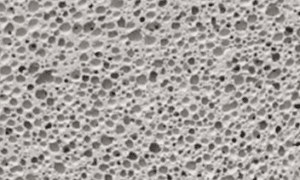Why reinforced autoclaved aerated concreteis a problem?
Understanding RAAC UK: Risks, Guidance and What You Need to Know
Reinforced autoclaved aerated concrete, known as RAAC, is a building material that has become a major topic in the property and construction sector. If you own, manage or are thinking about buying a building from the mid twentieth century especially those built between the 1950s and 1990s, which is when RAAC was commonly used you need to understand what RAAC is and how to deal with it.
This guide explains the risks, where RAAC is typically found and what action property owners should take, with particular relevance for those in England, as most government guidance and data focus on England.
What Is Autoclaved Aerated Concrete
Autoclaved aerated concrete is a lightweight form of concrete used widely between the 1950s and the 1980s. Many school blocks built during this period contain RAAC. It was chosen for its low cost and ease of installation across public sector buildings. Many schools, hospitals and council owned properties feature RAAC panels constructed for use in their roofs, floors, and wall construction. These roofs, walls or floors are often constructed using RAAC panels.
Unlike traditional concrete, RAAC has a more porous structure. The structural performance of RAAC panels in floor, roof, and wall construction is a key concern. This reduces weight but also reduces long term strength. Over time the material can weaken, particularly when exposed to moisture or where reinforcement has corroded. This is why RAAC is now considered a risk in older buildings.
The Local Government Association and the Department for Education have both issued detailed guidance for organisations responsible for buildings that may contain RAAC.
Why RAAC Presents a Risk
RAAC planks and panels can deteriorate as they age. Many RAAC components are now considered life expired, especially those installed in the 1950s-1970s. Structural engineers have raised concerns about their performance because they do not behave in the same way as traditional reinforced concrete. Some of the main risks include reduced durability, moisture penetration and loss of strength at the ends of planks.
Independent research, including work from the Building Research Establishment, has highlighted the increased chance of failure in roofs constructed with RAAC. Many cases of failure have occurred without obvious warning signs, which is why regular inspections are essential. It is also important to ensure correct support for RAAC elements to prevent sudden failure.
RAAC is particularly common in school buildings, especially those with flat roofs. For this reason the government has identified RAAC as a priority issue across the education sector and other public buildings, as managing RAAC is essential to protect the health of building occupants.



Assessment and Inspection
If RAAC is suspected, a competent structural engineer should carry out an inspection. It is essential to identify RAAC in buildings, particularly those constructed during the target era of the mid-1950s to mid-1980s, as these are most at risk. Industry guidance from the Institution of Structural Engineers outlines how to assess RAAC using visual checks supplemented with non destructive testing where needed.
Regular inspections and timely maintenance can reduce the chance of sudden failure. Responsible bodies, such as academy trusts, councils and NHS estates teams, are expected to keep RAAC under review and to take action if deterioration is found. Responsible bodies have submitted responses to government surveys to confirm the presence of RAAC in buildings from the target era.
The School Rebuilding Programme also provides funding for properties where RAAC has been confirmed, helping schools replace affected structures completely rather than relying on short term fixes.
How to Manage RAAC Risks
The Department for Education and the Local Government Association have set out a clear approach for managing RAAC in buildings. The process involves identifying the presence of RAAC, carrying out a detailed risk assessment and preparing a management plan.
Where RAAC presents immediate concerns, official guidance instructs schools and colleges to vacate areas containing RAAC until safety measures are in place. Some education settings have needed temporary classrooms or alternative accommodation while works progress. In some cases, alternative arrangements have included using different buildings or facilities not part of the main estate over the long term. For example, one college implemented alternative arrangements by relocating classes to a nearby community center after being required to vacate areas affected by RAAC. The government continues to support schools through funding, technical guidance and updated safety advice.
Confirmed RAAC Cases in Schools and Public Buildings
More than 200 schools and colleges have confirmed RAAC so far, and further assessments are ongoing. Once RAAC is confirmed, responsible bodies must put suitable safety measures in place. This may include propping, restricted access or temporary relocation.
It is important to manage RAAC risks across the entire school estate to ensure the safety of all students and staff.
Surveyors and building owners can refer to guidance from the Royal Institution of Chartered Surveyors, which supports decision making and outlines best practice for managing confirmed cases, with the ultimate goal to permanently remove RAAC from affected buildings.
Role of Chartered Surveyors
Chartered surveyors are at the forefront of managing the risks posed by reinforced autoclaved aerated concrete (RAAC) in UK buildings. Their expertise is vital in helping responsible bodies, such as local authorities, education settings, and building owners, navigate the complexities of identifying and addressing RAAC within their properties.
Working closely with the Local Government Association and the Building Research Establishment, chartered surveyors are trained to spot the signs of RAAC planks and panels in both public and privately owned buildings. Their knowledge of building construction and maintenance allows them to assess the structural performance of RAAC, ensuring that any potential weaknesses are identified early. This is particularly important in government property and school buildings, where the safety of occupants is paramount.
In the context of the School Rebuilding Programme, chartered surveyors play a key role in supporting responsible bodies to prioritise buildings for RAAC removal or remediation. They provide practical advice on suitable mitigations, as outlined in the latest guidance from the Department for Education, and help develop remedial action plans tailored to each building’s needs. Their input is essential for ensuring that any interventions meet current safety standards and effectively reduce risks.
The Royal Institution of Chartered Surveyors (RICS) has highlighted the importance of collaboration between surveyors, structural engineers, and other professionals in managing RAAC. By staying up to date with new guidance and research from leading institutions, chartered surveyors ensure their advice reflects the latest understanding of autoclaved aerated concrete RAAC and its impact on building safety.
Beyond technical assessments, chartered surveyors also advise on the financial implications of RAAC management. They help responsible bodies and local authorities weigh the costs and benefits of different approaches, from ongoing maintenance and inspections to full removal and replacement. This financial guidance is crucial for making informed decisions and prioritising resources effectively.
Ultimately, chartered surveyors are a critical resource for anyone responsible for buildings constructed with RAAC. Their combination of technical knowledge, practical experience, and up-to-date guidance ensures that risks are managed proactively, helping to safeguard the long-term safety and integrity of the UK’s building stock.



What Property Owners Should Do Next
RAAC is a significant issue for older properties, especially those in the public sector. A proactive approach is essential. This means identifying possible RAAC, arranging expert inspections and planning for removal or mitigation.
Recent tv coverage has highlighted the urgency of RAAC safety concerns, and the latest government guidance update issued in April 2024 underscores the importance of timely action. Government and industry bodies are working together to improve guidance and provide financial support, but building owners must take responsibility for ongoing checks and maintenance.
If you are buying or selling a property that may contain RAAC, specialist advice is recommended. Understanding the risks now can prevent unexpected costs in the future and help you make an informed decision.










